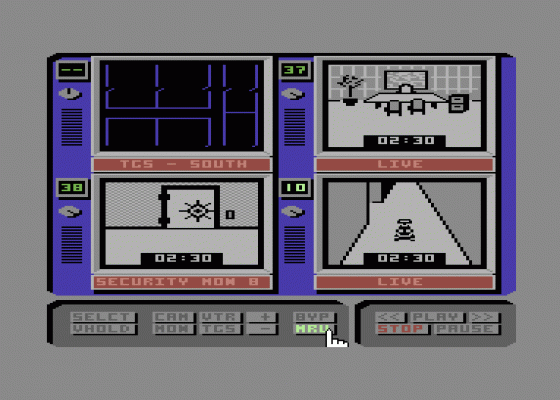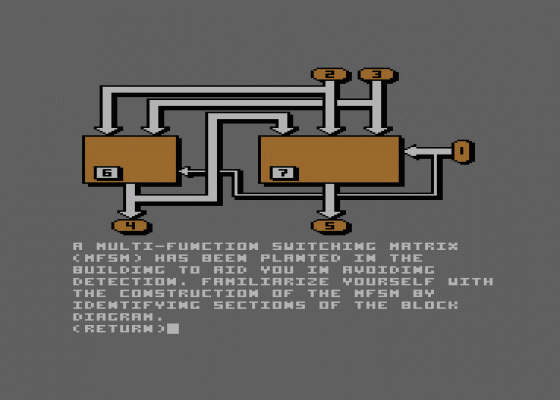
Computer Gamer
 1st December 1986
1st December 1986
Categories: Review: Software
Publisher: Activision
Machine: Commodore 64/128
Published in Computer Gamer #21
Hacker II
So impressed were the Government of the United States with your hacking prowess as demonstrated earlier (see the original Hacker) that they have been monitoring your progress ever since. Your first inkling of this comes one day when you are perusing the Activision Bulletin Board and a message appears on screen which has very little to do with games playing. Upon closer inspection, it turns out to be a message from the CIA, no less, asking you to volunteer for a particularly dangerous mission but one which, nevertheless, is perfectly suited to your dubious talents.
The Doomsday papers - a most secret set of documents are being held at a remote base somewhere in Siberia. As their release is likely to bring about the collapse of Western civilisation and promote the spread of communism, the White House is naturally extremely anxious that something will prevent this from happening. If you can retrieve the plans, action can be taken to neutralise their effect.
Not surprisingly, the documents are very well protected and you have to find a way of bypassing the complex of security cameras and personnel situated inside the building. To this end, you have been supplied with a little gizmo called a Multi Function Switching Matrix. This device can monitor four different cameras, each with thirty either channels to select from.

You can choose to have a camera watch a specific area permanently or switch to the thirty-eight sites in rotation. In addition, your machine is hooked up to a video recorder and you can tape different bits of the action with the idea of playing them back later and so fooling the guards that nothing unusual is going on by bypassing the real view of a security camera. This is something that will test your skills as a film editor as in a lot of cases, synchronisation errors can be detected and will alert the powers that be.
The game's instructions come in the form of a detailed operating manual for the MFSM. This is typically verbose, somewhat like a normal video recorder handbook only a lot more technical and requires considerable reading and digesting. Should you decide to accept the mission (does anyone ever refuse?), you are given a quick test in the various component parts before being thrown into the thick of things.
Once you have tuned in to the channels that you want and fine-tuned the MFSM using the vertical hold (a nice touch, this) you can start to work out exactly what is what. One of the cameras can be used to monitor the area surrounding your mobile remote unit - MRU. This little robot (you have three at your disposal) can be steered round the complex and should be used to map the area and note the position of any guards etc.

One guard that it will not help you with is the Annihilator, a little beasty summoned by the Russians with the sole intention of destroying your robot. Everything on screen is controlled by moving a little hand around the various boxes and selecting the function that you require.
I can't quite make up my mind about this game. Technically, it is brilliant, both in the way that it works and in its graphics but my doubts are about the actual gameplay itself. The first time that you load it in, you sit there playing with the different cameras, taping this that and the other and generally thinking how amazing everything is.
But when you actually come to sit down and play it properly, I don't think that many people will have the patience to work it all out without losing interest.
I can't even recommend you to try before you buy as it is only with an extended playing will you discover whether or not it appeals. Probably best suited to real techno freaks.
Other Reviews Of Hacker II: The Doomsday Papers For The Commodore 64/128
Hacker II (Activision)
A review
Hacker II (Activision)
A review
Hacker II: The Doomsday Papers (Activision)
A review by Ken McMahon (Commodore User)



